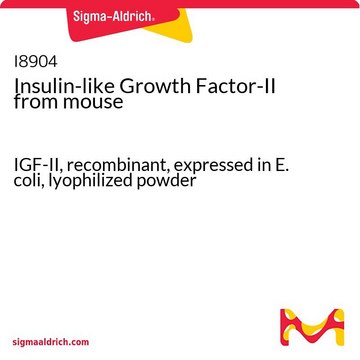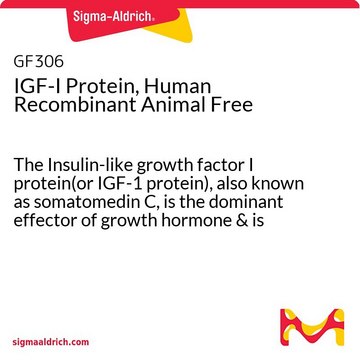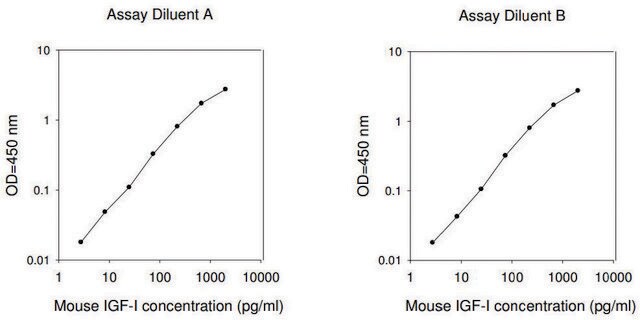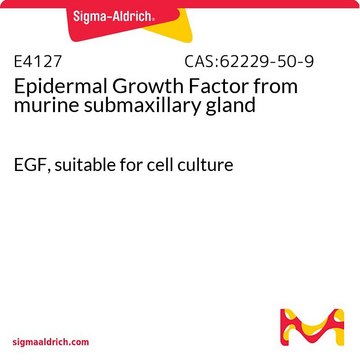I8779
Insulin-like Growth Factor-I from mouse
≥98% (SDS-PAGE & HPLC), recombinant, expressed in E. coli, lyophilized powder, suitable for cell culture
Synonym(s):
IGF-I
About This Item
Recommended Products
Product Name
Insulin-like Growth Factor-I from mouse, IGF-I, recombinant, expressed in E. coli, lyophilized powder, suitable for cell culture
biological source
mouse
Quality Level
recombinant
expressed in E. coli
Assay
≥98% (SDS-PAGE and HPLC)
form
lyophilized powder
quality
endotoxin tested
mol wt
predicted mol wt ~7.6 kDa
packaging
glass bottle of 50 μg (in glass insert)
technique(s)
cell culture | mammalian: suitable
impurities
<0.1 ng/mg (LAL test)
UniProt accession no.
storage temp.
−20°C
Gene Information
human ... IGF1(3479)
mouse ... Igf1(16000)
General description
Application
- for the preparation of growth factor cocktail
- as a media supplement for mouse embryonic fibroblasts culture
- as a media supplement to serve as a positive control to investigate
- the effects of Angelica sinensis on myotubes
Biochem/physiol Actions
IGF-I is secreted from the liver into circulation in a process regulated by pituitary growth hormone (GH) and so it mediates the growth-promoting activity of GH. After birth IGF-I expression in most extrahepatic tissues declines and hepatic expression of IGF-I becomes GH-regulated. Expression of IGF-I outside the liver is regulated differently, depending on the specific tissues. For example, gonadotropins and sex steroids regulate IGF-I expression within the reproductive system, while parathyroid hormone and sex steroids regulate IGF-I expression in bone. IGF-I is produced in several human tumors. IGF-I is mitogenic for a variety of cells including fibroblasts, osteoblasts, smooth muscle cells, fetal brain cells, neuroglial cells, and erythroid progenitor cells. IGF-I exerts its actions exclusively through the IGF-I receptor (IGF-IR). IGF-I induces endothelial cell migration and is involved in the regulation of angiogenesis.
Physical form
Analysis Note
related product
Storage Class Code
11 - Combustible Solids
WGK
WGK 3
Flash Point(F)
Not applicable
Flash Point(C)
Not applicable
Personal Protective Equipment
Choose from one of the most recent versions:
Already Own This Product?
Find documentation for the products that you have recently purchased in the Document Library.
Customers Also Viewed
Articles
Insulin-like Growth Factors (IGF)
Huntington's disease (HD) is an autosomal dominant, late-onset neurodegenerative disorder characterized by a selective neuronal cell death in the cortex and striatum leading to cognitive dysfunction, motor impairment and behavioral changes.
Our team of scientists has experience in all areas of research including Life Science, Material Science, Chemical Synthesis, Chromatography, Analytical and many others.
Contact Technical Service











